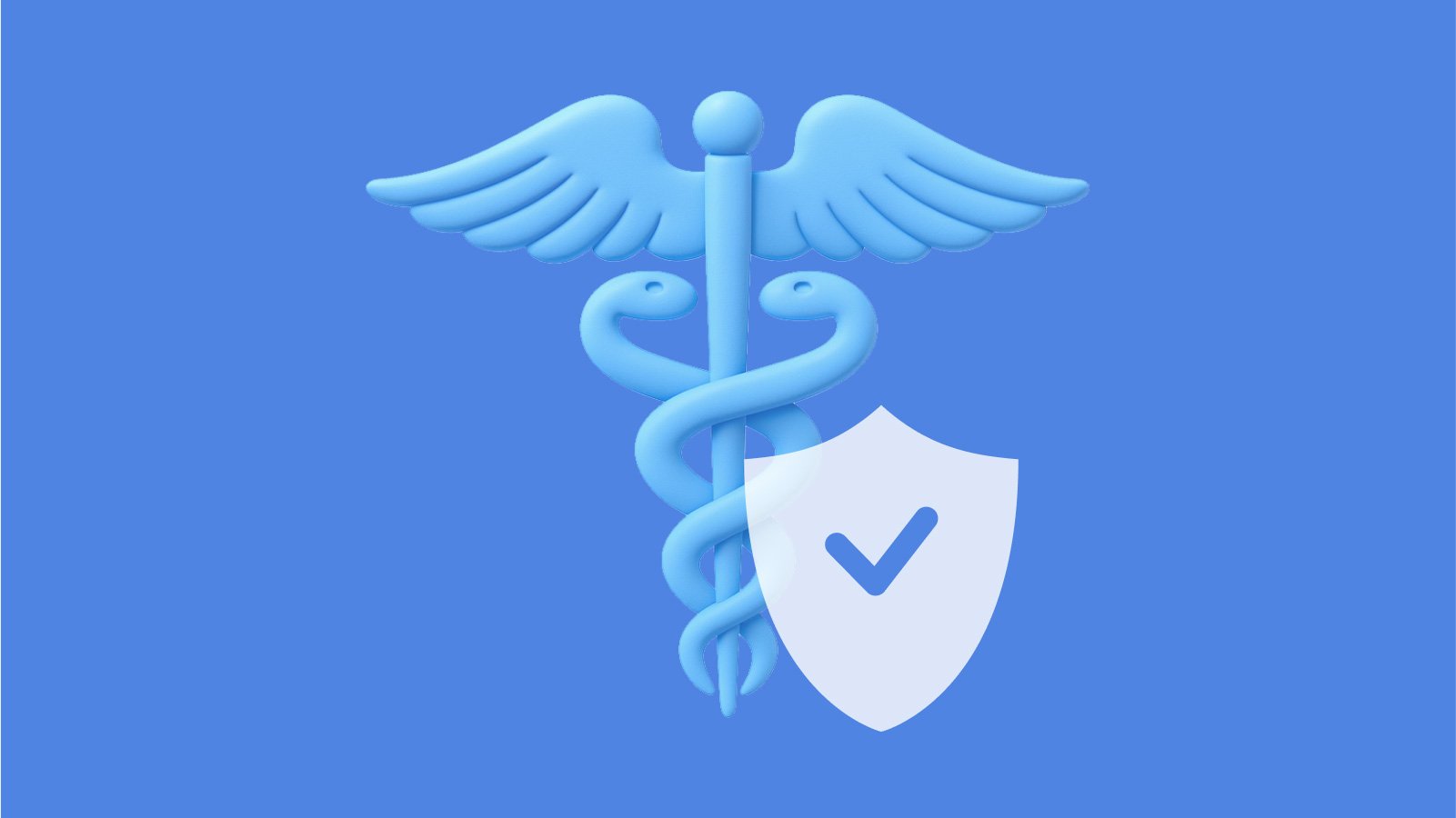In 2024, the healthcare sector experienced over 700 data breach incidents, which is higher than any other industry, including finance. These breaches exposed more than 275 million patient records, with password-related vulnerabilities serving as the primary attack vector in most of the cases.
While threat actors use various penetration methods, compromised credentials remain the most consistent and damaging entry point.
These statistics reflect a fundamental threat to patient and organizational safety. Current implications extend far beyond financial penalties or reputational damage. A breach of electronic Protected Health Information (ePHI) can disrupt patient care, compromise safety, and undermine trust in the whole healthcare system.
“Since 2020, as reported by HHS Office of Civil Rights, 590 million medical records have been impacted by health care breaches, meaning that the entirety of the U.S. population has had their health care records compromised in some manner, with most being impacted more than once.” — American Hospital Association
This reality has transformed password management from a routine IT function into a mission-critical component of healthcare delivery.
The Health Insurance Portability and Accountability Act (HIPAA) sets specific requirements for password management that healthcare organizations must address through comprehensive policies and technical safeguards. Yet, the regulation leaves many security leaders struggling to translate broad requirements into actionable implementation strategies.
What is HIPAA and who does it cover?
HIPAA, introduced in 1996, is a U.S. federal law that sets strict rules for protecting sensitive patient health information from unauthorized disclosure. While it is often associated with privacy protections, HIPAA also includes the Security Rule, which specifically addresses the safeguarding of electronic Protected Health Information.
ePHI refers to any personally identifiable health information that is created, stored, transmitted, or received electronically by a covered entity or business associate.
“The role of the CISO in healthcare is very unique. I believe that information security is a patient safety issue. And I think a lot of organizations are just starting to think about it as not just a risk to a patient’s information but a risk to a patient’s life. Bad information in a medical record could actually kill someone. I see the role of the CISO as integral to the delivery of quality patient care.” — Anahi Santiago, CISO at Christiana Care Health System
HIPAA applies to two primary categories of entities:
-
Covered entities. Organizations like hospitals, clinics, doctors, insurance companies, and other healthcare providers.
-
Business associates. IT providers, cloud storage companies, billing services, and consultants — people or companies that work with covered entities and have access to ePHI.
HIPAA violations can result in significant penalties and reputational damage. Since 2003, the HHS Office for Civil Rights has imposed $144,878,972 in total penalties, with recent 2025 penalties including $3 million against Solara Medical Supplies and $1.5 million against Warby Parker for cybersecurity failures.
Beyond financial consequences, organizations face permanent listing on OCR’s “Wall of Shame” breach portal, potential criminal prosecution (with 2,419 cases referred to the Department of Justice), and severe reputational damage.
Try a HIPAA-compliant password manager free for 1 month.
By understanding HIPAA requirements and choosing a compliant password manager like Passwork, organizations can enhance their defense mechanisms against cyber threats.
For healthcare security leaders, the takeaway is clear: prioritizing password management is not optional — it’s a critical component of both compliance and patient safety.
By investing in the right tools and practices, organizations can protect sensitive data, reduce risks, and build a culture of cybersecurity awareness.
Balancing security and clinical realities
The challenge is compounded by the unique operational environment of healthcare organizations. Unlike other industries, healthcare operates in a 24/7 environment where authentication delays or failures can jeopardize patient safety, disrupt critical care delivery, and potentially lead to life-threatening consequences. Doctors need instant access to patient information during emergencies, yet this same accessibility creates vulnerabilities that threat actors actively exploit.
New cybersecurity standards have made compliance even more challenging. The National Institute of Standards and Technology (NIST) updated its Digital Identity Guidelines (SP 800-63B) in 2024, shifting away from complex password requirements towards longer, more memorable passphrases while emphasizing multi-factor authentication and breach detection capabilities.
These changes align with evolving threat patterns but require healthcare organizations to reassess their existing password policies and technical implementations.
There’s another critical challenge — usability. Software must not get in the way of clinical work. Healthcare professionals should be able to start using their new solutions right away — without formal training or disruption to the workflow.
For CISOs, Security Directors, and Compliance Officers in healthcare, the priority is clear: create password management strategies that meet HIPAA, follow current security best practices, and fit real clinical workflows. This means knowing both the regulations and the technical tools needed to counter modern threats.
“You can say you make systems secure and compliant. Or you can have operational checks and balances to make sure they actually stay compliant.” — Mitchell Parker, CISO at Temple Health
HIPAA password management requirements
Regulatory framework overview
The HIPAA Security Rule establishes a risk-based framework for protecting ePHI. Password management is addressed in both administrative and technical safeguards:
-
45 CFR § 164.308(a)(5)(ii)(D): Administrative Safeguards – Security Awareness and Training (Password Management)
-
45 CFR § 164.312(d): Technical Safeguards – Person or Entity Authentication
These statutes require covered entities and business associates to implement policies and procedures that ensure only authorized individuals have access to ePHI, and that authentication mechanisms are properly managed and secured.
Administrative safeguards
This section mandates that organizations implement “Procedures for creating, changing, and safeguarding passwords.”
Key requirements include:
-
Formal password policies. Documented procedures covering password creation, modification, and protection.
-
User training. Continuous training on password security, including the recognition of social engineering attacks and the importance of unique, complex passwords.
-
Risk-based approach. The Security Rule requires organizations to conduct a risk analysis to determine appropriate password controls based on the nature of their systems and user access patterns.
-
Documentation. All procedures, risk assessments, and policy decisions must be documented and retained for six years.
“Security has always been a people issue. The toughest security problem is getting people to understand” — Jigar Kadakia, CISO at Partners HealthCare
Technical safeguards
This section requires “Implement procedures to verify that a person or entity seeking access to electronic protected health information is the one claimed.”
In practice, this means:
-
Authentication mechanisms. Organizations must deploy technical controls to authenticate users.
-
Accountability. Systems must log authentication events and support audit trails to detect and investigate unauthorized access.
-
Scalability and integration. Authentication controls must work across diverse healthcare IT systems, including EHRs, medical devices, and cloud services.
Addressable vs. required specifications
HIPAA distinguishes between “required” and “addressable” implementation specifications:
-
Required. These are mandatory. Failure to implement them constitutes non-compliance.
-
Addressable. Organizations must assess whether the specification is reasonable and appropriate in their environment. If not, they must document why and implement an equivalent alternative.
As for password management, many controls (such as unique user IDs) are required, while others (such as automatic logoff) are addressable.
However, the burden of proof lies with the organization, which must justify its decisions, document them, and periodically review their effectiveness.
Key criteria for choosing a password manager
Choosing a password manager is an important step for healthcare providers. A well-chosen password manager does more than just store credentials — it becomes a foundation of cybersecurity strategy, protecting sensitive information while empowering users with seamless access management.
-
Encryption. A password manager must use end-to-end encryption to ensure that passwords are inaccessible to unauthorized parties and can be decrypted only by the intended recipient.
-
Secure architecture. A solution should operate on a zero-knowledge architecture, meaning that even the service provider must not be able to access or decipher confidential data.
-
Access management. A password manager should support role-based access control (RBAC), allowing administrators to define and enforce permissions based on user responsibilities.
-
Audit trails. Detailed logs should make it possible for administrators to track user actions, identify potential security issues, and ensure compliance with regulatory requirements.
-
User experience. The solution should offer an intuitive interface and seamless integration with existing systems, minimizing the learning curve for users. Features like auto-fill, password generation, and centralized management should be simple to navigate. This matters in healthcare, where staff spend up to 45 minutes per shift just logging into different systems.
-
Scalability and performance. A solution should male it possible to manage credentials for thousands of users across hundreds of applications, including electronic health records, medical devices, administrative systems, and third-party cloud services.
Focusing on these features helps to choose a password manager that keeps organizations secure and easy to control. A good solution balances strong protection with a straightforward experience, reducing risks and encouraging better security habits.
HIPAA and Passwork
Selecting a password manager for healthcare institutions means meeting the highest standards of security, and regulatory compliance. At the same time, it should fit seamlessly into employees’ workflows, as overly complex tools risk immediate rejection — staff will normally find risky workarounds when systems are too complicated.
Passwork architecture and feature set address the specific compliance challenges and help healthcare providers safeguard electronic Protected Health Information and maintain compliance.
-
Certifications and security practices. Passwork is ISO 27001 certified, demonstrating adherence to internationally recognized information security standards. Regular penetration testing by HackerOne helps ensure the platform remains resilient against emerging threats.
-
On-premise deployment. Self-hosted deployment allows healthcare organizations to host the password manager within their own infrastructure. This approach keeps credentials under direct control, supports HIPAA’s data protection requirements, and minimizes exposure to third-party risks.
-
Data protection by design. Passwork combines zero-knowledge architecture with AES-256 end-to-end encryption, reducing the risk of unauthorized disclosure and fully supports HIPAA’s privacy, security, and technical safeguard requirements
-
Access management. Integration with LDAP and SSO simplifies user authentication and centralizes access management.
-
Granular access control. Role-based access control enables administrators to define precise permissions for each user — only authorized staff can access specific data, supporting HIPAA’s minimum necessary standard.
-
Audit trail and real-time monitoring. HIPAA requires detailed audit controls. Passwork provides comprehensive logging of all actions, allowing organizations to track access and modifications to sensitive data. Real-time notifications for critical events helping organizations respond quickly to potential security incidents.
-
Multi-factor authentication. Support for MFA adds an extra layer of security even if a password is compromised.
-
Easy onboarding. Intuitive interface allows healthcare staff to adopt the system quickly, minimizing disruption and accelerating the transition to a secure, centralized password management. Passwork has received the “Ease of Use” award from Capterra, confirming that the solution is genuinely user-friendly and does not require extensive training.
“We believe that security and usability must go hand in hand, especially in healthcare. Our mission is to make data protection stronger, without making life harder for everyday staff” — Alex Muntyan, CEO of Passwork
By combining advanced security features with compliance-focused design, Passwork helps healthcare organizations meet HIPAA requirements and protect their most sensitive patient related records.
Way to compliance
Meeting the HIPAA requirements demands sustained leadership commitment, ongoing technological investments, and agility when responding to new threats and regulations. Organizations that successfully implement comprehensive password management solutions will strengthen security posture and improve patient care capabilities in an increasingly digital healthcare environment.
By understanding HIPAA requirements and choosing a compliant password manager like Passwork, organizations can enhance their organization’s defense mechanisms against cyber threats.
For healthcare security leaders, the takeaway is clear: prioritizing password management is not optional, it is a critical component of both compliance and patient safety.
By investing in the right tools and practices, organizations can protect sensitive data, reduce risks, and build a culture of cybersecurity awareness.
Passwork provides an advantage of effective teamwork with corporate passwords in a totally safe environment.
Try the HIPAA-compliant Passworkpassword manager free for 1 month.
Sponsored and written by Passwork.

